Get On The List
Get the latest Men's Style Advice, Evergreen Guides, Shopping Tips, and Exclusive Deals From Today's Top Brands.
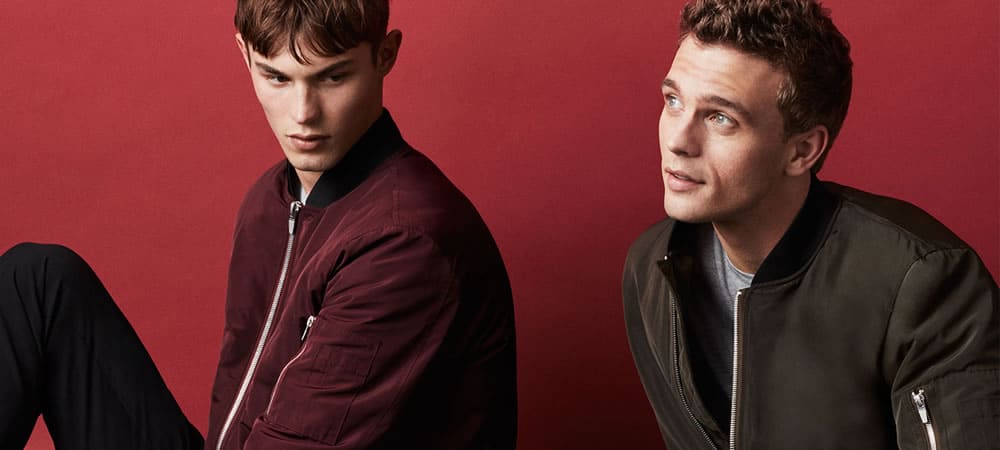
We independently evaluate all recommended products and services. Any products or services put forward appear in no particular order. if you click on links we provide, we may receive compensation.
Your twenties – or the early ones at least – are the “wonder years”. You wonder how you’re ever going to pay off these tuition fees. Why people voluntarily choose to get married and have children. Why you drunk so many Jagerbombs last night.
You also wonder what to wear, which is complicated by the fact that yourcruy twenties will (hopefully) see you transition from being a student to a young professional. This seemingly superficial concern conceals the deeper question of who you are and what you want to do with your life. No wonder it can seem harder than a degree in rocket science.
The good news is that your twenties are the time to experiment; the bad news is that experiments can go catastrophically wrong. So like an older, wiser voiceover, FashionBeans is lending you our notes that you can avoid some of the most painful mistakes and learn how to dress in your 20s.
You’re at the age (and BMI) when you can get away with most things. But you’re also impressionable, yearning to establish your identity and vulnerable to the notion that buying certain kinds of clothes will make you cooler or more attractive.
Becoming a fashion victim is all part of growing up, but don’t mire yourself further in debt for designer labels, however vital they may seem. That’s why God invented affordable fast-fashion knock-offs.
Too much experimenting will leave you with an incoherent Frankenstein’s wardrobe of mismatching pieces – and a monstrous overdraft. Speaking of bodies, yours should be fully developed. “Many guys are afraid of this, but there’s nothing wrong with getting pointers from shop staff on the best size and cut for you,” says Giles Farnham head of River Island Style Studio.
The result of all those experiments is the knowledge that some things don’t suit you.
Self-identification can be difficult when your life is in flux and you’re beset by trends, style tribes and celebrities. While at uni, I bought a cafe racer biker jacket and beanie in an attempt to replicate Justin Timberlake in the video for “Like I Love You”. But it didn’t make me look like JT, or like I rode a bike, or feel right, however desperately I wanted it to.
If you’re not that kind of person, then it’s just fancy dress – and unconvincing at that.
“Investing in key pieces” is not wise when you’re a workie: without a critical mass of garms, you’ll run them into the ground. “Basics like sweats and T-shirts tend to be more disposable, and that’s totally fine,” says Farnham. “There’s no need to fill your wardrobe with designer white tees that will wear out after a few hot washes.”
You’re better off alternating two inexpensive suits than hammering a pricier one. Wait until your wardrobe’s stocked – and you’re getting paid – before you upgrade.
“Dressing for the job you want” might be a sound principle, especially if your current position is on the sofa watching daytime TV, but it’s not always practical. Conversely, turning up to a grad scheme looking like Gordon Gekko is going too far.
“You don’t have to spend money to look money,” says Farnham, who recommends taking off-peg-suits to a local tailor for adjustments. Polishing your shoes, ironing your shirts and trimming your nails meanwhile only costs time.
They say that it’s better to regret something that you have done than something that you haven’t. Getting a tattoo is a notable exception. Yes, body art is more socially acceptable now, but if it’s permanently visible, inappropriate or just plain bad then it can still cost you future careers, cover-ups or removal.
Youthful exuberance can be as intoxicating as Fresher’s Week, but a lot of stuff that you care about now will fade. Ill-conceived ink won’t.
If this all sounds more sententious than a fortune cookie, apologies. But with any luck, you haven’t yet learnt that there are more important things than exam results, so try and keep in mind that clothes are not life (or death).
Besides, it’s not like there’s some infinitely capacious, publicly accessible repository where photographic evidence of all of your sartorial transgressions will be recorded for posterity and periodically resurfaced as “memories”…
A slim pair of black jeans is as close to standard-issue as you’ll come in your most experimental decade. They pair with blazers and biker jackets, smart shoes and sneakers, so they work whatever your evening plans, from gigs to dinner with the parents.
If you don’t want to murder out your wardrobe, indigo is just as versatile and just as essential.
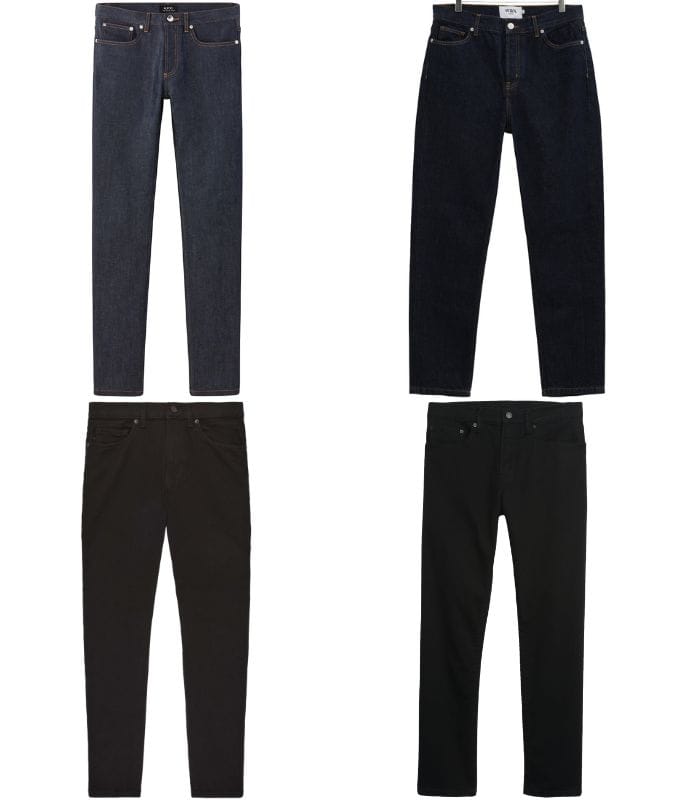
Whether you’re scaling the corporate ladder or not, a rail of white shirts is a sartorial safety net for any grown-up. Keep a high-quality, well-fitting, stiff-collared and seldom worn option in your wardrobe for job interviews, weddings and other formal emergencies.
Then mix easily replaced (read: cheap) alternatives for the nine-to-five with a couple of button-down Oxfords for more casual appointments.
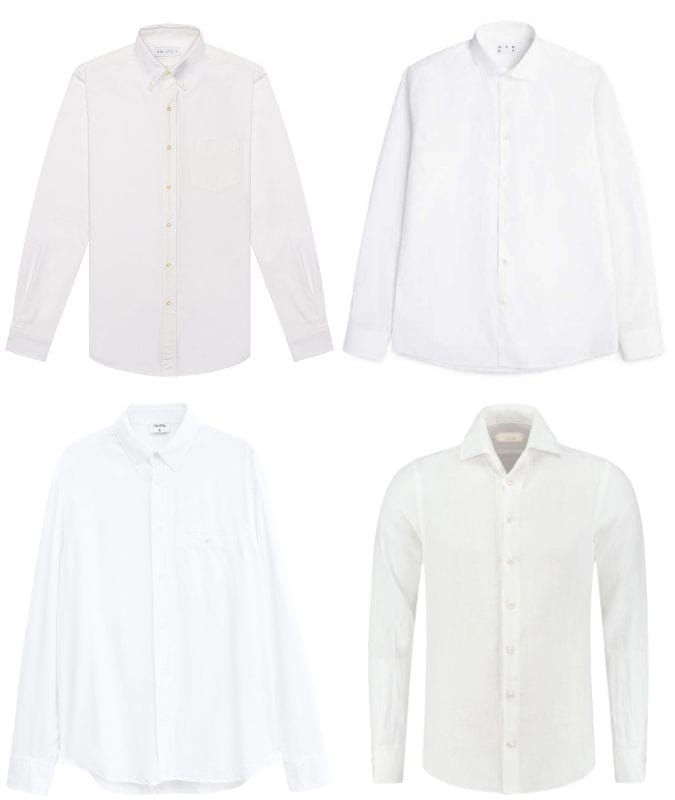
If you work in anything resembling a corporate environment, a ‘proper’ pair of shoes is one of the unwritten rules of the staff handbook. For the most formal offices, only a pair of Oxfords will do, but assuming your employer is at least pretending to be forward-looking, a pair of Derbies or brogues give you more opportunities to wear off-duty.
Fast becoming menswear’s first name on the team sheet, the bomber jacket can play in almost any position, teaming up with sportswear, tailoring and everything in between. The key is deciding which type best fits your style.
A classic MA-1 brings some military precision to streetwear while slimmer-cut leather options can happily replace a blazer. In the middle of the park, Harrington jackets and woollen styles span the vast and confusing smart-casual spectrum.
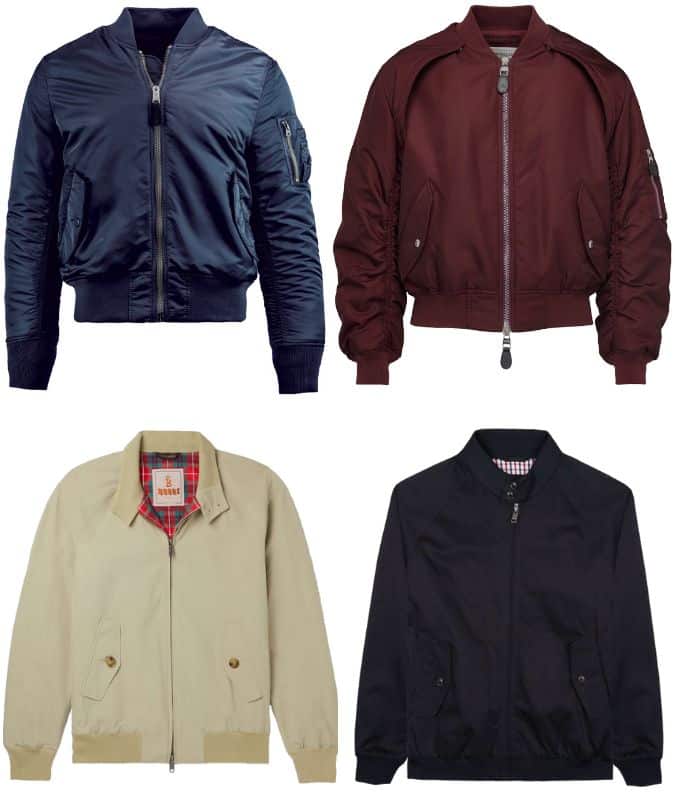
The one your parents dressed you up in for your aunt’s second marriage doesn’t count. This is the first suit you handpick yourself, and that matters.
First thing’s first: buying off the high-street peg is perfectly acceptable, just keep a little budget back and get it altered so that it fits like something made-to-measure. And while you can opt for something individual in a pastel colour or with a loud check, the boring truth is that you’ll get a lot more wear from a well-cut two-button style in grey or navy.

In the last 10 years, menswear has become a lot more utilitarian and frankly what that means is, it’s become easier. Certain staples are able to tie entire wardrobes together, perhaps none more so than the simple white trainer.
The same pair can work with everything from denim to suiting to tracksuits – just keep them pared back (and clean). If you’re building a wardrobe from the bottom up, this is your first brick.
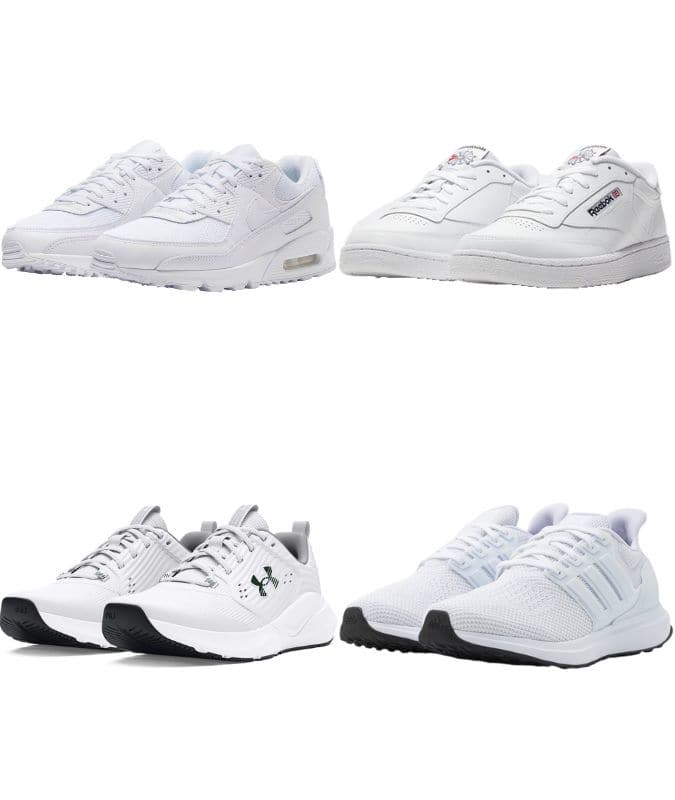
Let’s assume your old man didn’t hand down a Patek Philippe on your 18th birthday. It’s probably for the best. In your 20s, what you really need on your wrist is a watch that can withstand a few scrapes and pair with a range of outfits.
Depending on your style, something steel is your safest bet. Try a minimalist design or a watch on the more reserved side of sporty – it will work under a shirt cuff at the office, and you needn’t take it off for the weekend.
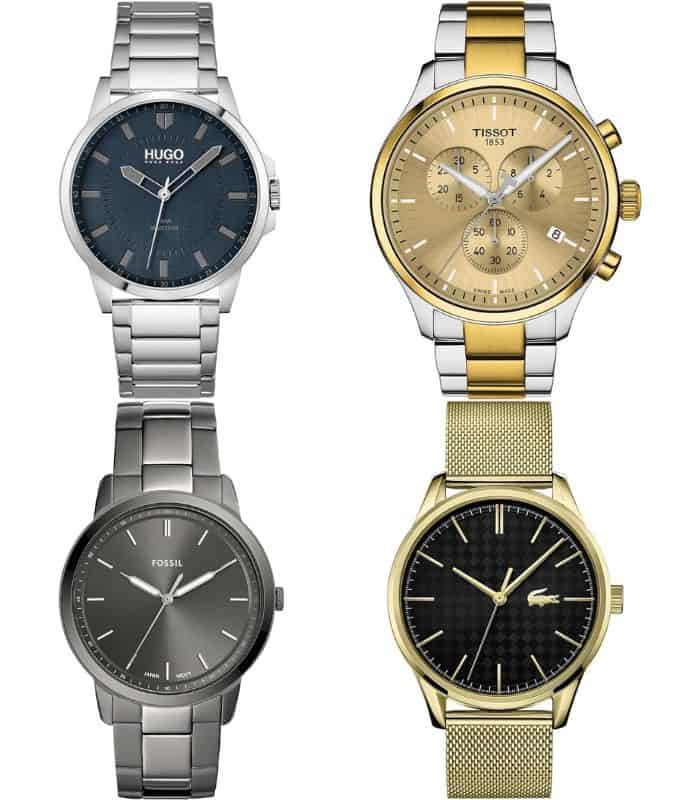
The multi-directional Malik swerves any and every way the fashion winds blow, whether that’s dying his hair pink or turning up to the Met Ball in a tux with armoured arms like a cross between Tony Stark and Iron Man. A flex too far? Maybe. But you have to admire the 24-year-old’s metal.
![]()
If there’s one thing more terrifying than a killer clown, it’s growing old. At 27, It “Boy” Skarsgård – younger brother of Alexander – is closer to his thirties than his teens. But by sticking to minimalist Scandinavian principles, he can rock a down-with-the-kids longline bomber without looking like a joker.
![]()
It hurts me to admit it as an Arsenal fan, but the Tottenham midfielder is earning his Spurs in the style arena. In particular, he’s upped his tailored overcoat game, lending him a maturity beyond his tender 21 years and promoting the rest of his casual streetwear into a higher league.
Whether he’s wearing a tuxedo or sportswear, the British rapper has a knack of making everything look tailored. Maybe he only wears made-to-measure, but the more likely explanation is that he completely understands his sizes. His go-to look is a single-button blazer over a plain tee, which he keeps from looking boring by using a broader colour palette than most of us are brave enough to try.
Slim-cut tailoring won’t always look as good on you as it does in your 20s. This is something the British actor seems to understand very well because he’s rarely spotted out of a perfectly cut jacket.
Even when he’s dressing down, you’ll often see him in form-fitting styles like biker jackets and knitted polo shirts. Again, trust us on this: make the most of it because it honestly doesn’t last.
Certain colours or degrees of contrasts will complement your complexion and eye colouring; certain cuts will flatter or offset your proportions; certain styles will reflect your personality.
In the genetic card game of life, you can only stick, not twist. Well, not without the kind of cosmetic surgery pioneered in Face/Off.
“Signature style” sounds pretentious AF. But by 30 you’ll be in a rut – sorry, routine – with work, which means that you wear some items much more frequently than others. So buy more of those, with just enough variation in colour and design that nobody twigs that you’re basically wearing the same thing everyday.
Any gaps in your rotation should have been plugged. “You’ll then want to pepper your wardrobe with good-quality, timeless pieces that will last, like leather brogues or a well-fitting suit,” says Farnham.
“Spending a little more on a few key pieces will lift your entire look.” It’s also the excuse you need to buy a proper mechanical watch.
Sure, you’re still relatively young and hot, but it’s time to step up and be a man, says Farnham. “Stop dressing like a child.”
That’s mostly down to sizing up: “Going bigger makes you look like you’re wearing hand-me-downs.” But by your fourth decade, you should have graduated from ripped jeans, slogan T-shirts and threadbare uni stash. (Related: 5 Things To Chuck When Turning 30)
Working out what suits you is one thing; coming to terms with it is another. Like a six-figure salary or a six-pack, clothes won’t make you a different, happier person. The right ones will do a lot, but ultimately they can only help you be the best version of yourself – not Zayn Malik, Justin Timberlake or anybody else.

Formerly online style and grooming editor at GQ, Jamie Millar is a contributing editor to Men’s Health and a correspondent for outlets such as Mr Porter, Amuse and The Gentleman’s Journal. (Follow him on Instagram @mrjamiemillar.) With a frankly alarming number of years’ experience under his waistband, he’s equally comfortable dispensing advice about classic style or high fashion, Swiss watches or fitness and nutrition – because he’s probably wearing (tailored) sweatpants while he does so.

We independently evaluate all recommended products and services. Any products or services put forward appear in no particular order. if you click on links we provide, we may receive compensation.
Your twenties – or the early ones at least – are the “wonder years”. You wonder how you’re ever going to pay off these tuition fees. Why people voluntarily choose to get married and have children. Why you drunk so many Jagerbombs last night.
You also wonder what to wear, which is complicated by the fact that yourcruy twenties will (hopefully) see you transition from being a student to a young professional. This seemingly superficial concern conceals the deeper question of who you are and what you want to do with your life. No wonder it can seem harder than a degree in rocket science.
The good news is that your twenties are the time to experiment; the bad news is that experiments can go catastrophically wrong. So like an older, wiser voiceover, FashionBeans is lending you our notes that you can avoid some of the most painful mistakes and learn how to dress in your 20s.
You’re at the age (and BMI) when you can get away with most things. But you’re also impressionable, yearning to establish your identity and vulnerable to the notion that buying certain kinds of clothes will make you cooler or more attractive.
Becoming a fashion victim is all part of growing up, but don’t mire yourself further in debt for designer labels, however vital they may seem. That’s why God invented affordable fast-fashion knock-offs.
Too much experimenting will leave you with an incoherent Frankenstein’s wardrobe of mismatching pieces – and a monstrous overdraft. Speaking of bodies, yours should be fully developed. “Many guys are afraid of this, but there’s nothing wrong with getting pointers from shop staff on the best size and cut for you,” says Giles Farnham head of River Island Style Studio.
The result of all those experiments is the knowledge that some things don’t suit you.
Self-identification can be difficult when your life is in flux and you’re beset by trends, style tribes and celebrities. While at uni, I bought a cafe racer biker jacket and beanie in an attempt to replicate Justin Timberlake in the video for “Like I Love You”. But it didn’t make me look like JT, or like I rode a bike, or feel right, however desperately I wanted it to.
If you’re not that kind of person, then it’s just fancy dress – and unconvincing at that.
“Investing in key pieces” is not wise when you’re a workie: without a critical mass of garms, you’ll run them into the ground. “Basics like sweats and T-shirts tend to be more disposable, and that’s totally fine,” says Farnham. “There’s no need to fill your wardrobe with designer white tees that will wear out after a few hot washes.”
You’re better off alternating two inexpensive suits than hammering a pricier one. Wait until your wardrobe’s stocked – and you’re getting paid – before you upgrade.
“Dressing for the job you want” might be a sound principle, especially if your current position is on the sofa watching daytime TV, but it’s not always practical. Conversely, turning up to a grad scheme looking like Gordon Gekko is going too far.
“You don’t have to spend money to look money,” says Farnham, who recommends taking off-peg-suits to a local tailor for adjustments. Polishing your shoes, ironing your shirts and trimming your nails meanwhile only costs time.
They say that it’s better to regret something that you have done than something that you haven’t. Getting a tattoo is a notable exception. Yes, body art is more socially acceptable now, but if it’s permanently visible, inappropriate or just plain bad then it can still cost you future careers, cover-ups or removal.
Youthful exuberance can be as intoxicating as Fresher’s Week, but a lot of stuff that you care about now will fade. Ill-conceived ink won’t.
If this all sounds more sententious than a fortune cookie, apologies. But with any luck, you haven’t yet learnt that there are more important things than exam results, so try and keep in mind that clothes are not life (or death).
Besides, it’s not like there’s some infinitely capacious, publicly accessible repository where photographic evidence of all of your sartorial transgressions will be recorded for posterity and periodically resurfaced as “memories”…
A slim pair of black jeans is as close to standard-issue as you’ll come in your most experimental decade. They pair with blazers and biker jackets, smart shoes and sneakers, so they work whatever your evening plans, from gigs to dinner with the parents.
If you don’t want to murder out your wardrobe, indigo is just as versatile and just as essential.

Whether you’re scaling the corporate ladder or not, a rail of white shirts is a sartorial safety net for any grown-up. Keep a high-quality, well-fitting, stiff-collared and seldom worn option in your wardrobe for job interviews, weddings and other formal emergencies.
Then mix easily replaced (read: cheap) alternatives for the nine-to-five with a couple of button-down Oxfords for more casual appointments.

If you work in anything resembling a corporate environment, a ‘proper’ pair of shoes is one of the unwritten rules of the staff handbook. For the most formal offices, only a pair of Oxfords will do, but assuming your employer is at least pretending to be forward-looking, a pair of Derbies or brogues give you more opportunities to wear off-duty.
Fast becoming menswear’s first name on the team sheet, the bomber jacket can play in almost any position, teaming up with sportswear, tailoring and everything in between. The key is deciding which type best fits your style.
A classic MA-1 brings some military precision to streetwear while slimmer-cut leather options can happily replace a blazer. In the middle of the park, Harrington jackets and woollen styles span the vast and confusing smart-casual spectrum.

The one your parents dressed you up in for your aunt’s second marriage doesn’t count. This is the first suit you handpick yourself, and that matters.
First thing’s first: buying off the high-street peg is perfectly acceptable, just keep a little budget back and get it altered so that it fits like something made-to-measure. And while you can opt for something individual in a pastel colour or with a loud check, the boring truth is that you’ll get a lot more wear from a well-cut two-button style in grey or navy.

In the last 10 years, menswear has become a lot more utilitarian and frankly what that means is, it’s become easier. Certain staples are able to tie entire wardrobes together, perhaps none more so than the simple white trainer.
The same pair can work with everything from denim to suiting to tracksuits – just keep them pared back (and clean). If you’re building a wardrobe from the bottom up, this is your first brick.

Let’s assume your old man didn’t hand down a Patek Philippe on your 18th birthday. It’s probably for the best. In your 20s, what you really need on your wrist is a watch that can withstand a few scrapes and pair with a range of outfits.
Depending on your style, something steel is your safest bet. Try a minimalist design or a watch on the more reserved side of sporty – it will work under a shirt cuff at the office, and you needn’t take it off for the weekend.

The multi-directional Malik swerves any and every way the fashion winds blow, whether that’s dying his hair pink or turning up to the Met Ball in a tux with armoured arms like a cross between Tony Stark and Iron Man. A flex too far? Maybe. But you have to admire the 24-year-old’s metal.
![]()
If there’s one thing more terrifying than a killer clown, it’s growing old. At 27, It “Boy” Skarsgård – younger brother of Alexander – is closer to his thirties than his teens. But by sticking to minimalist Scandinavian principles, he can rock a down-with-the-kids longline bomber without looking like a joker.
![]()
It hurts me to admit it as an Arsenal fan, but the Tottenham midfielder is earning his Spurs in the style arena. In particular, he’s upped his tailored overcoat game, lending him a maturity beyond his tender 21 years and promoting the rest of his casual streetwear into a higher league.
Whether he’s wearing a tuxedo or sportswear, the British rapper has a knack of making everything look tailored. Maybe he only wears made-to-measure, but the more likely explanation is that he completely understands his sizes. His go-to look is a single-button blazer over a plain tee, which he keeps from looking boring by using a broader colour palette than most of us are brave enough to try.
Slim-cut tailoring won’t always look as good on you as it does in your 20s. This is something the British actor seems to understand very well because he’s rarely spotted out of a perfectly cut jacket.
Even when he’s dressing down, you’ll often see him in form-fitting styles like biker jackets and knitted polo shirts. Again, trust us on this: make the most of it because it honestly doesn’t last.
Certain colours or degrees of contrasts will complement your complexion and eye colouring; certain cuts will flatter or offset your proportions; certain styles will reflect your personality.
In the genetic card game of life, you can only stick, not twist. Well, not without the kind of cosmetic surgery pioneered in Face/Off.
“Signature style” sounds pretentious AF. But by 30 you’ll be in a rut – sorry, routine – with work, which means that you wear some items much more frequently than others. So buy more of those, with just enough variation in colour and design that nobody twigs that you’re basically wearing the same thing everyday.
Any gaps in your rotation should have been plugged. “You’ll then want to pepper your wardrobe with good-quality, timeless pieces that will last, like leather brogues or a well-fitting suit,” says Farnham.
“Spending a little more on a few key pieces will lift your entire look.” It’s also the excuse you need to buy a proper mechanical watch.
Sure, you’re still relatively young and hot, but it’s time to step up and be a man, says Farnham. “Stop dressing like a child.”
That’s mostly down to sizing up: “Going bigger makes you look like you’re wearing hand-me-downs.” But by your fourth decade, you should have graduated from ripped jeans, slogan T-shirts and threadbare uni stash. (Related: 5 Things To Chuck When Turning 30)
Working out what suits you is one thing; coming to terms with it is another. Like a six-figure salary or a six-pack, clothes won’t make you a different, happier person. The right ones will do a lot, but ultimately they can only help you be the best version of yourself – not Zayn Malik, Justin Timberlake or anybody else.

Formerly online style and grooming editor at GQ, Jamie Millar is a contributing editor to Men’s Health and a correspondent for outlets such as Mr Porter, Amuse and The Gentleman’s Journal. (Follow him on Instagram @mrjamiemillar.) With a frankly alarming number of years’ experience under his waistband, he’s equally comfortable dispensing advice about classic style or high fashion, Swiss watches or fitness and nutrition – because he’s probably wearing (tailored) sweatpants while he does so.
Formerly online style and grooming editor at GQ, Jamie Millar is a contributing editor to Men's Health and a correspondent for outlets such as Mr Porter, Amuse and The Gentleman's Journal. (Follow him on Instagram @mrjamiemillar.) With a frankly alarming number of years' experience under his waistband, he's equally comfortable dispensing advice about classic style or high fashion, Swiss watches or fitness and nutrition - because he's probably wearing (tailored) sweatpants while he does so.
Read MoreThis website uses cookies so that we can provide you with the best user experience possible. Cookie information is stored in your browser and performs functions such as recognising you when you return to our website and helping our team to understand which sections of the website you find most interesting and useful.
Strictly Necessary Cookie should be enabled at all times so that we can save your preferences for cookie settings.
If you disable this cookie, we will not be able to save your preferences. This means that every time you visit this website you will need to enable or disable cookies again.